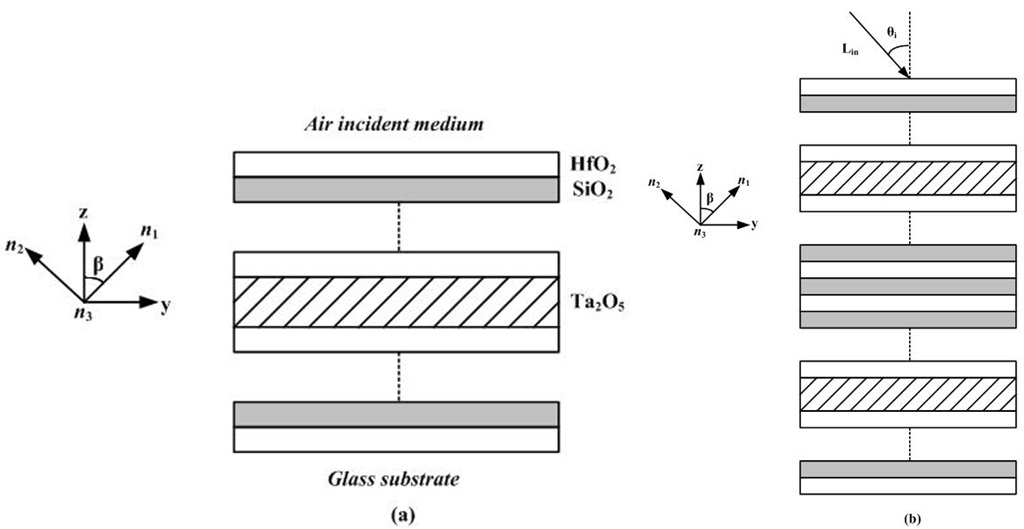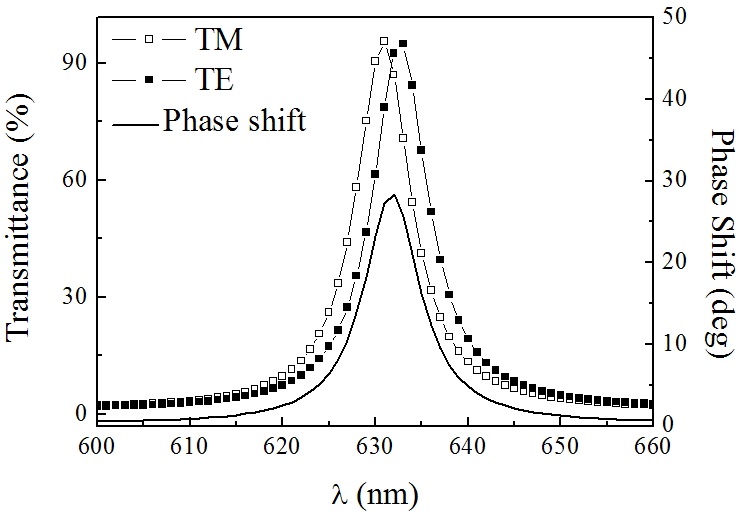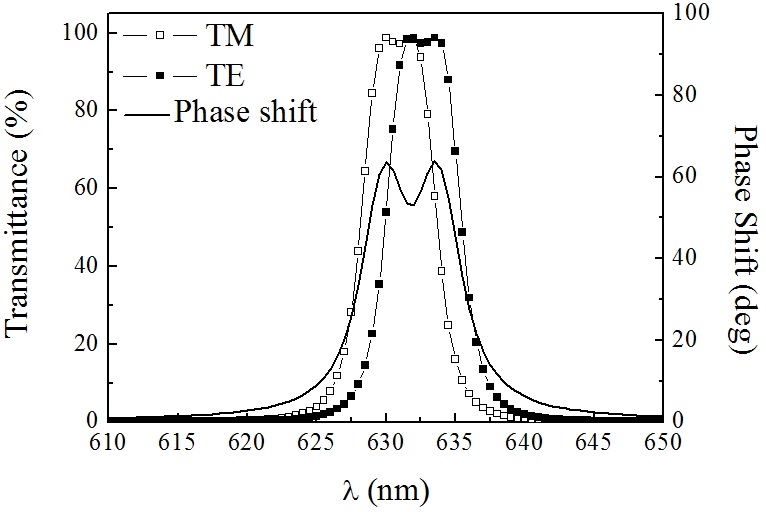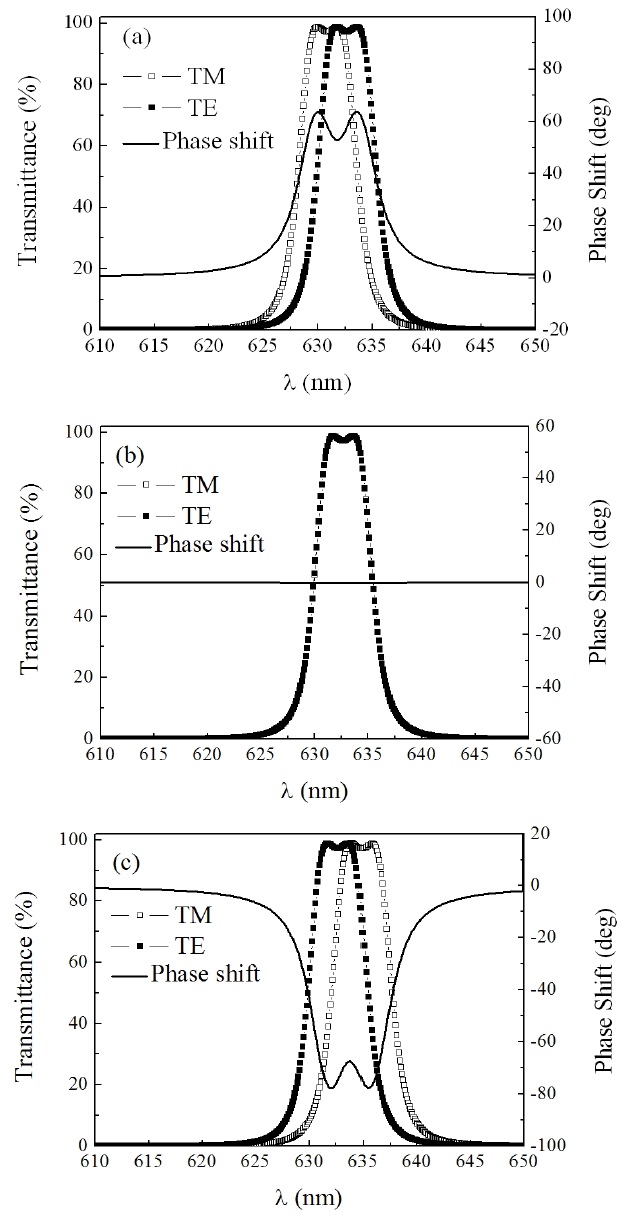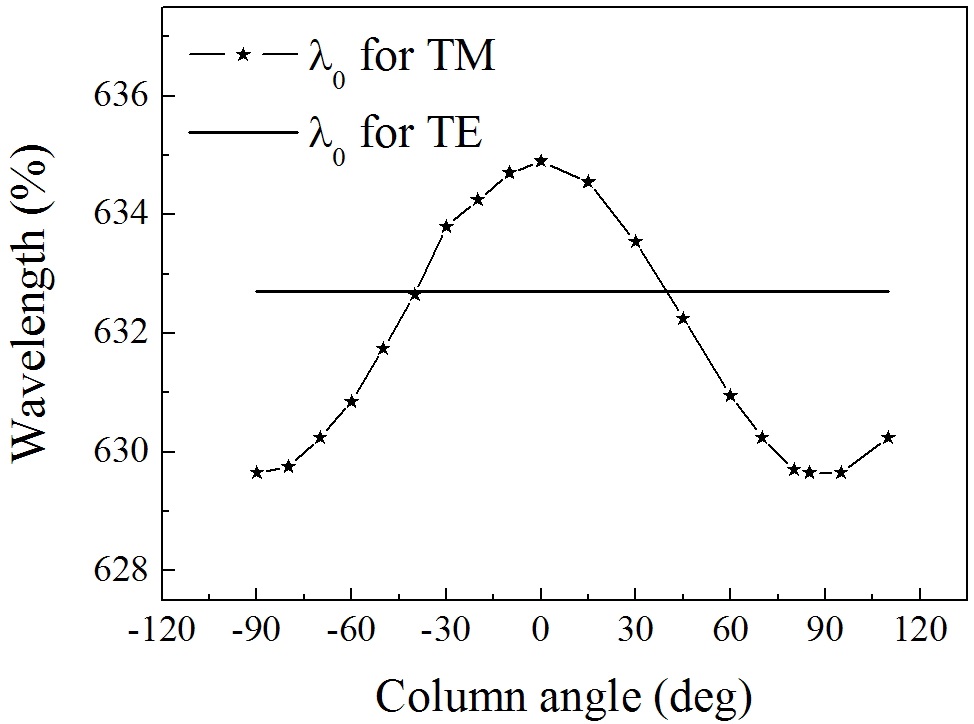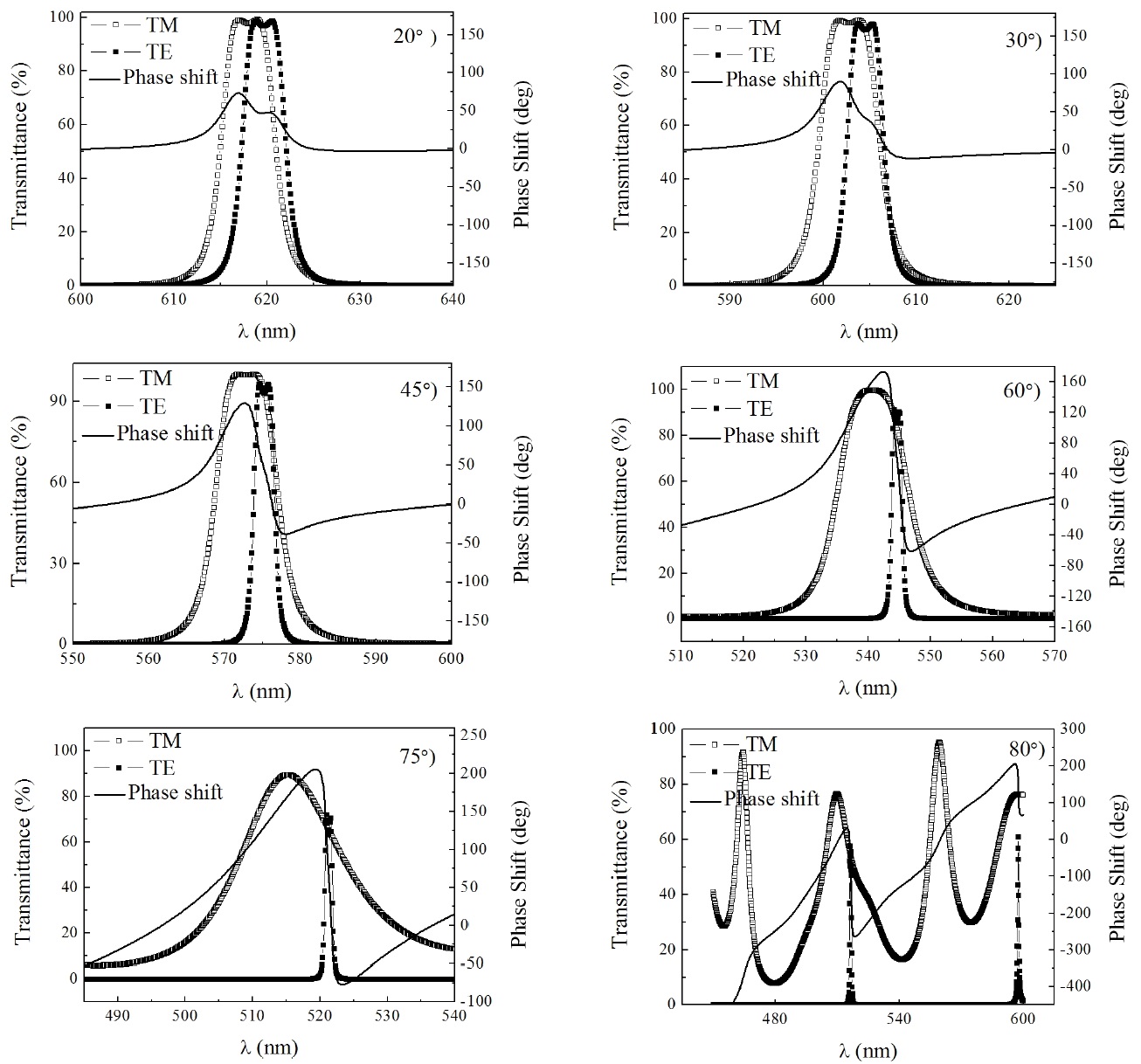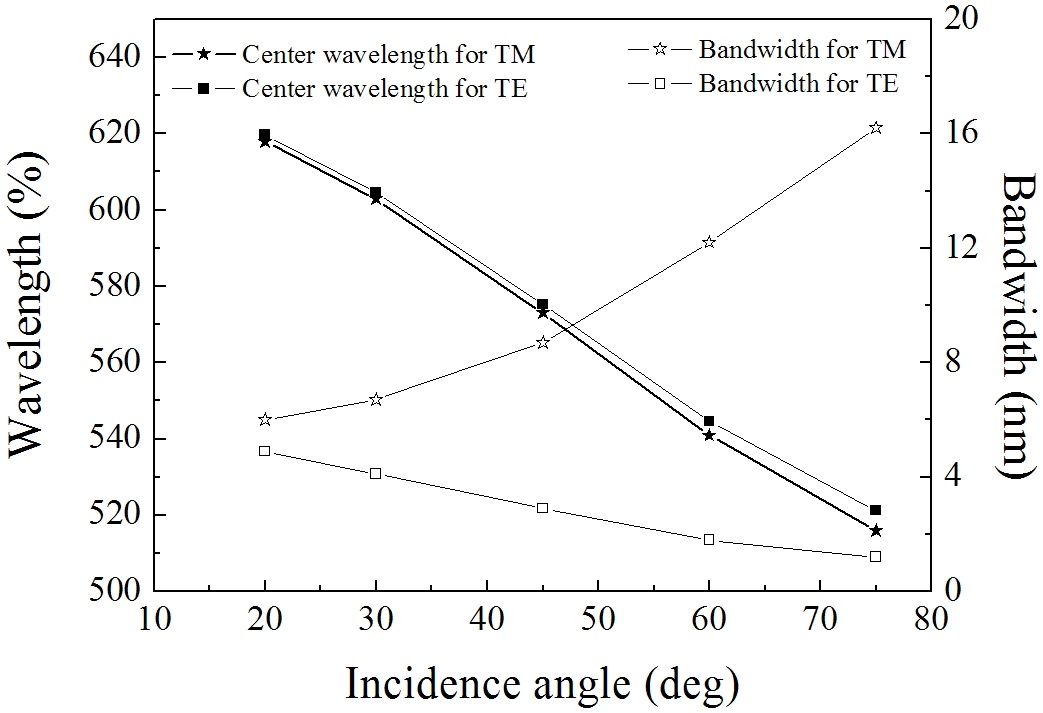



Sculptured thin film (STF) is a nanostructured solid state film with anisotropic and continuum characteristics that can be deposited via the glancing angle deposition technique (GLAD). Such films show lower density than that of the bulk form, and have several potential applications in catalytic surfaces [1,2], micro-sensor elements [3-5], low dielectric materials [6], etc. The theories of the electromagnetic wave propagation in STF have been well established [7-10]. With the help of state of the art technology, the nanostructure of the GLAD films can be fabricated in different forms, from the simple microstructures, i.e., oblique column, zigzag, helix [11-13], to exotic nanostructures, i.e., polygonal spirals, superhelices, etc. [14,15]. To date, a large number of optical components, such as laser cavity filters [16,17], phase compensators [18], antireflection coatings [19], polarizers [20], etc., have been prepared successfully. The development of STF provides more flexible materials for the design and fabrication of optical devices, especially for the phase and polarization of optical components. In contrast to conventional optical components that are made from isotropic thin films, devices constructed with anisotropic thin films (ATFs) can perform better in manipulating the polarization state of electromagnetic waves because an ATF presents birefringence. This property is very important to the development of polarization and F-P filter components for the miniaturization of integrated optical systems.
In this study, a new design concept of Fabry-Perot (F-P) filter, constructed with an anisotropic space layer and a couple of isotropic mirrors, with the alternative high and low refractive indices, was proposed. In addition, a software package based on the characteristic matrix method was developed to calculate the optical properties of the anisotropic and isotropic thin films, i.e., transmittance, reflectance, transmission phase, and reflection phase. Single- and doublecavity F-P filters were also designed. Furthermore, the dependence of transmittance and transmission phase on the column direction of the anisotropic space layer and the incidence angle was investigated.
II. THE SINGLE- AND DOUBLE-CAVITY FABRY-PEROT FILTER DESIGNS
In our design, the basic type of F-P filter comprises quarter-wave isotropic layers with alternative high and low refractive indices and half-wave anisotropic space layer, denoted as H, L, and 2N, respectively.
2.1. Single Cavity Fabry-Perot filter
The structure of the single cavity filter is Glass/(HL)5H 2N (HL)5H/Air. The optical thickness of H, L, and N layers is
at the reference wavelength
2.2. Double Cavity Fabry-Perot filter
The transmittance curve of the single-cavity filter is nearly triangular, and one half of the energy transmitted lies beyond the pass band. When two or more of the filters are placed in series, a rectangular transmission curve can be obtained. Furthermore, the attenuation outside the pass band is greater than the single filter structure. Similar to the single cavity F-P filter structure, the double-cavity filter is also constructed with isotropic HfO2, SiO2, and anisotropic Ta2O5. The structure of the double-cavity filter is Glass/(HL)5H 2N (HL)5H L (HL)5H 2N (HL)5H/Air.
The transmittance and phase shift of a single cavity filter for the two polarizations at the normal incidence are depicted in Fig. 2. As can be seen, the transmittance spectra are separated for two polarized states, anisotropic space layer yields different phases for the TM and TE waves, and the central wavelength of the filter for the two polarizations are not overlapped at the normal incidence, different from the all-dielectric filter constructed with the isotropic materials. Moreover, the transmittance and transmission phase shift are nearly triangular, and the peak value of the phase shift is about 28.3° at the 632.8 nm wavelength.
The transmittance and phase shift of the double-cavity filter are illustrated in Fig. 3. Similarly, the transmittance and transmission phase shifts are nearly rectangular, and exhibit ripples in the transmission band. The phase shift is about 60° near the central wavelength, and is almost doubled compared with that of the single-cavity filter, indicating that the phase shift is almost proportional to the physical thickness of the anisotropic space layer in the filters.
For the filter in Fig. 1, the TE wave propagates along with an ordinary direction with the index of refraction
principal refractive indices
With the matrix relationship given above and Fresnel’s law, it yields the transmittance
The transmittance and phase shift of the double-cavity filter with different column angles are shown in Fig. 4. For the column angle
The dependence of the central wavelength of the doublecavity filter on the column angle is plotted in Fig. 5 for the TE and TM waves. The central wavelength of the TE wave is determined by the refractive index
For the oblique incidence, the tilted optical admittance and equivalent phase thickness were introduced for the calculation of transmittance and transmission phase shift. The tilted optical admittance and equivalent optical thickness of the TM wave depends on the incidence angle. The transmittances and phase shifts of the double-cavity filter
are plotted in Fig. 6 at the incidence angles of 20°, 30°, 45°, 60°, 75°, and 80°. The bandwidth of the TM wave increases as the incidence angle increases, whereas that of the TE wave decreases. In addition, the obvious modulation of phase shift in the pass band of the filter is observed. With the increase of incidence angle, the modulation depth varies from 73.1°cidence angle of 20° to 280° andcidence angle of 75°. At the incidence angle of 80°, the transmission spectrum of the filter is distorted severely for the TE and TM waves.
The dependence of the central wavelength and bandwidth of the double-cavity filter on the incidence angle was also investigated, as shown in Fig. 7. With the increase of incidence angle, the central wavelength decreases from 620 nm to 520 nm for the two polarizations, and the bandwidth increases from 6 nm to 16.2 nm for the TM wave, whereas
that of TE wave decreased from 4.9 nm to 1.2 nm.
For the all-dielectric F-P filter designed as (HL)xH 2N (HL)xH, the bandwidth Δ
where
The single- and double-cavity Fabry-Perot filters, constructed with anisotropic space layer and isotropic mirrors, were designed based on the Maxwell equations and the characteristic matrix method. The dependence of the transmittance and phase shift for two orthogonal polarization states on the column angle of the anisotropic space layer and the incidence angle was discussed. The results show that the anisotropic space layer has an important role for the transmittance and phase shift of the filters. We demonstrated that the polarization state of electromagnetic waves and phase shift can be modulated by using an anisotropic space layer in a polarization F-P filter. Birefringence ascribed to the orientated growth and anisotropic microstructures provided a sophisticated phase modulation with varied incidence angles over a broad range to have a wide-angle phase shift. This new concept would be useful in designing optical components by exploiting the isotropic and anisotropic materials.
